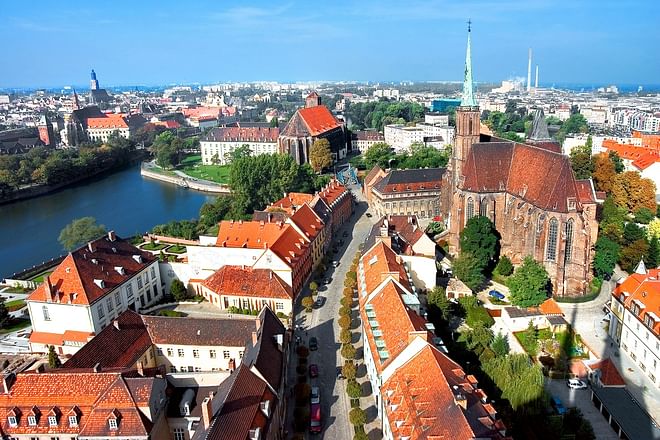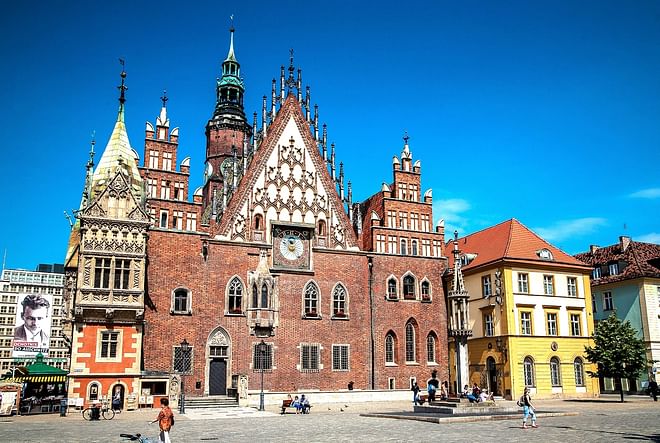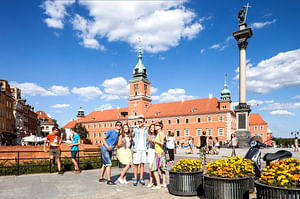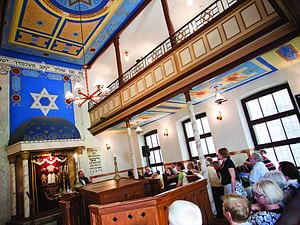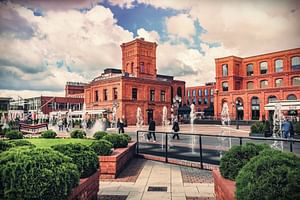Construction of the Centennial Hall is one of the turning points in the history of the utilisation of steel for reinforcing structural frames of buildings. It was constructed between
Construction of the Centennial Hall is one of the turning points in the history of the utilisation of steel for reinforcing structural frames of buildings. It was constructed between 1911 and 1913, in commemoration of the hundredth anniversary of the Battle of the Nations, fought with Napoleon (1813). Its other purpose was to serve as the centre for the great Centennial Exhibition. The city allocated a great land for this purpose, on the border of Szczytnicki Park, nearby the Zoological Garden and on site of a horse racing track, open until 1907. In the competition for developing the site, Max Berg was chosen from among 43 designers. Not surprisingly, he was indeed the urban architect of Wrocław. His project met with loud protests from his competitors, as frequently is the case in such situations. Nevertheless, and regardless of the high costs (Reichmark 1.9 million), a formal building permit was issued on June 28, 1911. At the time of its construction, the Hall had the biggest reinforced concrete roofing in the world. The covering central cupola had 67 meters in diameter and the maximal width of the interior equals 95 metres. Available surface amounts to 14000 square metres. The Hall is spacious with the inner height of 43 metres. Further 56 exhibition rooms and vast lobbies were planned around the central hall. It was assumed that the Jahrhunderthalle exhibition centre could receive even 10,000 visitors at a time. The Hall’s construction was finalised in December, 1912, a month and a half ahead of the planned date. The main room contained huge organ, the same that now plays in the Cathedral of St. John the Baptist in Wrocław. The Centennial Exhibition and the Hall as well were inaugurated with the performance of Gerhart Hauptmann’s play. An interesting fact is that no heating system had been designed for the Hall. It was added only after World War II. Nowadays, the Hall, equipped in the recent years with a highly advanced system of fold-up floors for different purposes and new windows with roller blinds, serves as a concert hall and a show room. It hosts both basketball games and monumental opera performances.
Panorama of the Battle of Raclawice Museum
Stroll medieval cobblestone streets, find out more about history of Wroclaw walking along Nankiera Square, visit Marker Hall and exceptional, the only one of its kind, the Panorama of the Battle of...
Stroll medieval cobblestone streets, find out more about history of Wroclaw walking along Nankiera Square, visit Marker Hall and exceptional, the only one of its kind, the Panorama of the Battle of Raclawice Museum presenting one of the biggest 360˚ panoramic battle scenes in the world, nowadays one of the nation’s symbol. The museum was built on purpose in that shape to house a monumental 15 × 114 meter cycloramic painting depicting the Battle of Raclawice, during the Kosciuszko Uprising. The painting is one of only a few preserved relics of a genre of 19th-century mass culture, and the oldest in Poland. The panorama stands in a circular fashion and, with the viewer in the center, presents different scenes at various viewing angles. A special kind of perspective used in the painting and additional effects like lighting, artificial terrain, trees and buses create a feeling of reality. It allowed travelling in time and spaces two centuries before virtual reality was invented, but even now it is a great experience leaving visitors in amazement and disbelief.
